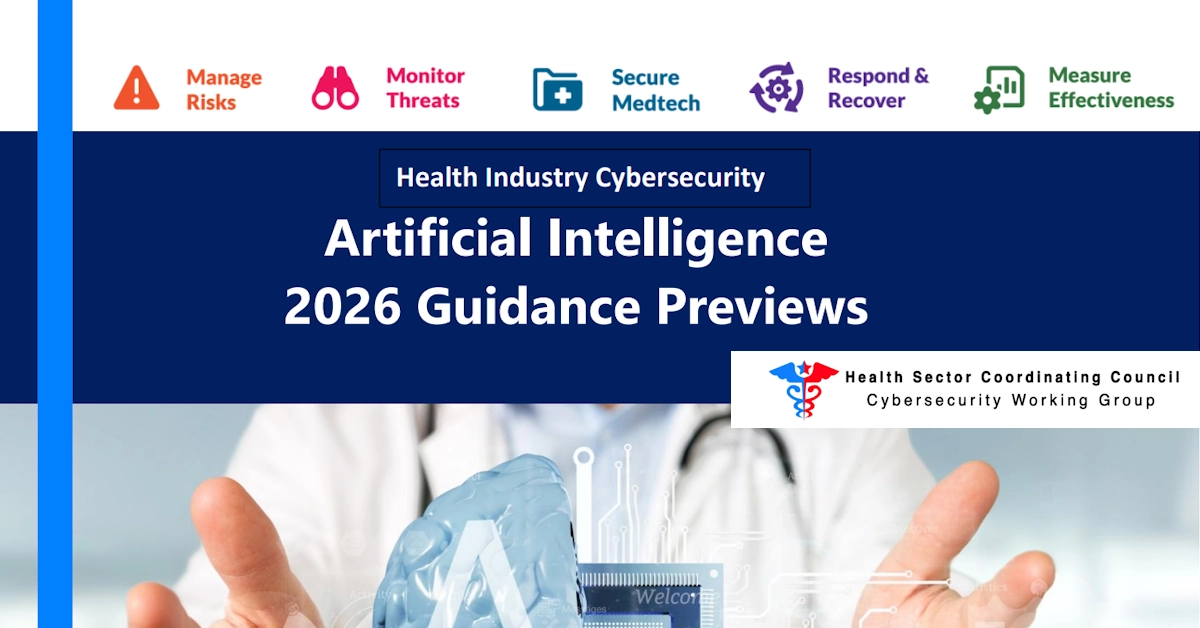Navigating the Future of AI Cybersecurity in Healthcare: Insights from the HSCC
The Health Sector Coordinating Council (HSCC), through its dedicated Cybersecurity Working Group (CWG), is setting the stage for a transformative approach to artificial intelligence (AI) and cybersecurity in healthcare. Recently, the HSCC unveiled early previews of its upcoming 2026 guidance aimed at addressing the complexities and risks associated with AI technologies. Recognizing the duality of AI as a tool for innovation and a vector for potential vulnerabilities, the HSCC’s phased rollout of resources will foster the responsible adoption of AI while prioritizing patient safety and data integrity.
A Proactive Approach to AI Cybersecurity
The HSCC announced a series of succinct one-page summaries that outline five distinct workstreams focusing on AI in healthcare cybersecurity. These workstreams will serve as the foundation for comprehensive white papers scheduled for release in 2026. Each workstream addresses critical areas essential for effective cybersecurity governance, including:
- Education and Enablement
- Cyber Operations and Defense
- Governance
- Secure-by-Design Principles
- Third-Party Risk and Supply Chain Transparency
These efforts signify a proactive stance in preparing healthcare organizations to face both the opportunities and challenges presented by AI.
Education and Enablement: Building Awareness from the Ground Up
The Education and Enablement subgroup is focusing on a foundational aspect of cybersecurity: awareness. This subgroup aims to create a common language around AI cybersecurity risks, developing educational materials that help healthcare professionals understand AI’s role in their environments. By providing resources such as top ten AI definitions, videos, infographics, and training course recommendations, the subgroup seeks to elevate understanding and promote the responsible use of AI technologies.
Their expected outcomes include:
- Enhanced awareness of AI terminology and its implications.
- Improved comprehension of risks associated with AI deployment.
- Broader application of appropriate control measures within healthcare settings.
Cyber Operations and Defense: Preparing for the Inevitable
The Cyber Operations and Defense subgroup is tasked with creating actionable playbooks that aid healthcare organizations in preparing for, detecting, responding to, and recovering from AI-related cybersecurity incidents. This subgroup outlines critical steps necessary for optimizing AI-specific cybersecurity operations, focusing on incident response strategies as well as ensuring clinical workflows remain uncompromised.
Key deliverables include:
- AI Cyber Resilience and Incident Recovery Playbook
- AI-Driven Clinical Workflow Threat Intelligence Playbook
- Cybersecurity Operations for AI Systems Playbook
By developing these resources, the subgroup aims to enhance operational resilience and ensure that AI systems remain secure throughout their lifecycle.
Governance: A Framework for Responsible AI Management
The Governance subgroup is spearheading the creation of a comprehensive framework to manage AI cybersecurity risks effectively. This framework will encapsulate governance processes aligned with regulatory requirements like HIPAA and FDA guidelines, focusing on the entire AI lifecycle.
Their work includes:
- Establishing formal governance processes that clarify roles and responsibilities.
- Identifying relevant standards and implementing AI-specific security controls.
- Developing an AI Governance Maturity Model to help organizations gauge their current capabilities and prioritize necessary improvements.
This structured approach aims to pave the way for ethical and responsible AI deployment in clinical environments.
Secure by Design: Embedding Cybersecurity into Product Development
The Secure by Design subgroup focuses on integrating cybersecurity principles into the development of AI-enabled medical devices. By collaborating across various teams—engineering, cybersecurity, regulatory, and clinical—the subgroup aims to formulate tools and guidance that promote security throughout the product lifecycle.
Key priorities include:
- Addressing unique AI security risks like data poisoning and model manipulation.
- Promoting the integration of AI Bill of Materials (AIBOM) and Trusted AI BOM (TAIBOM) to enhance transparency and traceability.
The subgroup’s intended deliverables encompass a set of best practices for AI security, including a comprehensive guide to embedding security from the product development stages.
Third-Party Risk and Supply Chain Transparency: Enhancing Collaborative Security
The Third-Party AI Risk and Supply Chain Transparency subgroup is dedicated to augmenting the security and resilience of healthcare supply chains through better visibility and governance of third-party AI tools. This subgroup emphasizes standardized procurement processes and robust vendor vetting to manage cyber and data risks effectively.
Key activities involve:
- Developing policies for tracking and monitoring third-party AI tools.
- Establishing governance boards to oversee lifecycle risk management.
- Crafting contractual provisions to safeguard against data misuse and breaches.
Through these efforts, the subgroup aims to reduce systemic exposure to hidden AI risks and elevate patient safety and data privacy.
Looking Ahead: A Sector-Wide Call to Action
As the HSCC CWG progresses, they are urging healthcare organizations to embrace these emerging best practices and collaborate in shaping a future governed by robust AI cybersecurity frameworks. The anticipated guidance documents, set to be released in stages starting January, will serve as critical resources for ensuring that innovation within the healthcare sector is matched by a steadfast commitment to security, privacy, and operational resilience.
By actively engaging with these forthcoming resources, the healthcare community can better navigate the complexities of AI, ensuring that technology serves its ultimate purpose: to enhance patient care and improve health outcomes.





